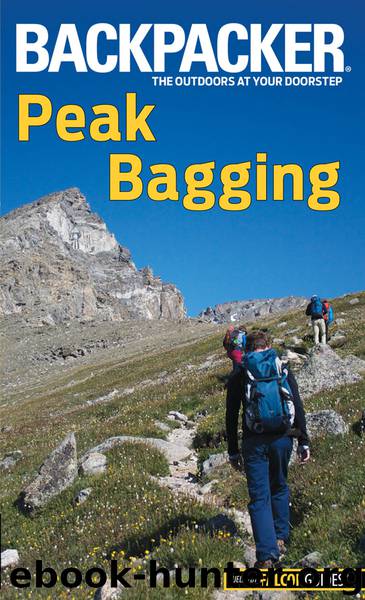Backpacker Magazine's Peak Bagging by Leonard Brendan

Author:Leonard, Brendan
Language: eng
Format: epub
ISBN: 9781493015016
Publisher: Falcon Guides (R&L)
PACE
Getting to the top of a mountain is never a race, and if you can learn anything from big-mountain climbers and guides, it’s that pace is crucial. If you start out as fast as you can from the trailhead, you’re not going to be able to keep up that pace all day. Repetitively going hard and fast for a short amount of time, then taking a break, then starting again is both physically and mentally exhausting.
Think of the mountain as a city street with stop-lights every block. Hiking at a good pace that pushes you, but not too much, is like driving at a moderate speed and hitting every light when it’s green. Hiking fast, getting out of breath, stopping to catch your breath, then hiking fast again is like driving fast but getting a red light at every intersection. It’s frustrating, harder on your car, and terrible for your gas mileage.
Your pace will slow as you hit steeper sections and/or when you get to higher altitudes. Don’t worry about going too slow; just concentrate on moving. Even if you’re only taking fifty steps each minute, you’re still moving faster than if you have to stop every 2 minutes to lean on your trekking poles and catch your breath for 30 seconds.
Throughout a day of hiking, you’ll take thousands of steps and obviously expend a significant amount of energy. You might not think that conserving energy makes any sense—the whole idea is to exercise, right? But using your energy in the right way can make a long day in the mountains a little less strenuous. “The First Rule of Mountaineering” goes: “Never stand when you can sit, and never sit when you can lie down.” This idea is, of course, more appropriate for long, multiday trips (you’re probably not going to do a lot of lying down during most day hikes), but the idea of conserving energy is there.
One technique to insert micro-rests into your hike or climb is a technique called the “rest step,” a longtime mountaineering standby. On steeper terrain, your leg muscles will get a huge workout, moving almost nonstop for a long time. The rest step gives your muscles a tiny break every time you step, decreasing your level of fatigue—and it’s ridiculously simple: When walking uphill, simply straighten your forward leg completely at the top of each step, just for a half-second. This gives your legs a small break with every step, putting your body weight on your skeleton instead of your muscles.
Download
This site does not store any files on its server. We only index and link to content provided by other sites. Please contact the content providers to delete copyright contents if any and email us, we'll remove relevant links or contents immediately.
Periodization Training for Sports by Tudor Bompa(7936)
Bodyweight Strength Training by Jay Cardiello(7683)
Therapeutic Modalities for Musculoskeletal Injuries, 4E by Craig R. Denegar & Ethan Saliba & Susan Saliba(7602)
Born to Run: by Christopher McDougall(6904)
Imperfect by Sanjay Manjrekar(5686)
Wiseguy by Nicholas Pileggi(5335)
Shoe Dog by Phil Knight(4903)
Paper Towns by Green John(4815)
The Body: A Guide for Occupants by Bill Bryson(4600)
The Rules Do Not Apply by Ariel Levy(4538)
Endurance: Shackleton's Incredible Voyage by Alfred Lansing(4519)
Bodyweight Strength Training Anatomy by Bret Contreras(4485)
Tuesdays with Morrie by Mitch Albom(4414)
Yoga Anatomy by Kaminoff Leslie(4111)
The Sports Rules Book by Human Kinetics(4087)
Science and Development of Muscle Hypertrophy by Brad Schoenfeld(3974)
Dynamic Alignment Through Imagery by Eric Franklin(3931)
Exercise Technique Manual for Resistance Training by National Strength & Conditioning Association(3791)
Bodyweight Strength Training: 12 Weeks to Build Muscle and Burn Fat by Jay Cardiello(3786)
